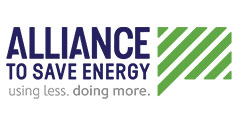When were your windows installed? The 1950s? The 1960s? The 1980s? If so, then it may surprise you that today’s windows are more than just glass. Even within the last 10 years, the science behind energy-efficient windows has evolved considerably.
“If you have an older home,“ says window replacement expert Gerry Rogers, “your windows are probably not up to par when it comes to energy efficiency.“
Energy Star, a government organization that measures the energy efficiency of a variety of products, reports that homeowners can save at least 15% on energy bills with new windows.
Double Your Window’s Energy-Efficiency with Two Panes of Glass
Old windows usually have one pane of regular glass. In the summer, sunlight pours through the window, flooding the home with heat. In the winter, all the warmth from a heat pump or wood stove escapes through the glass.
“The problem with glass is that it’s not a good insulator,“ says Rogers. “That’s why you have glass cookware: heat passes easily through it.“
Advances in window technology over the past 20 years have rendered single-paned windows obsolete. Modern windows come with two panes of glass that have a layer of air between them. In these double-paned windows, the layer of air adds extra insulation.
Argon and Low-E: Invisible Insulators
The layer of air in a double-paned window alone is subject to convection and conduction currents, which can transfer heat in and out of your home. But when that layer is filled with a harmless, invisible gas like argon, the insulation value of the window skyrockets.
“Argon in your windows is like the insulation you put in your walls,“ says Rogers. “You can’t see it. It doesn’t make your window ugly. But it makes a big difference when it comes to keeping your home comfortable.“
Argon insulates well because it is heavier than air. Since it is heavier, it moves slower, minimizing conduction and convection currents. Many windows come standard with argon gas fills to increase energy efficiency.
The other big advancement in energy-efficient windows is Low-E coatings. These are microscopic coatings of metals like silver applied to the glass of your window. You can’t see it—it doesn’t affect your window’s view—but it reflects heat. In the summer, this keeps the sun’s heat out. In the winter, this keeps your warm air in.
When Low-E is combined with argon-filled, double-paned windows, the savings can be tremendous. However, some windows can save you more money than others. Energy Star guidelines require a window to save only 15% on energy bills. Some windows can save you up to 25% on energy bills.
Plus, energy-efficient windows add tremendous value to your home. According to Remodeling Magazine, you can regain 81% of your window replacement investment if you ever sell your home. Combined with the money you’ll save on energy bills, energy-efficient windows pay for themselves.

















